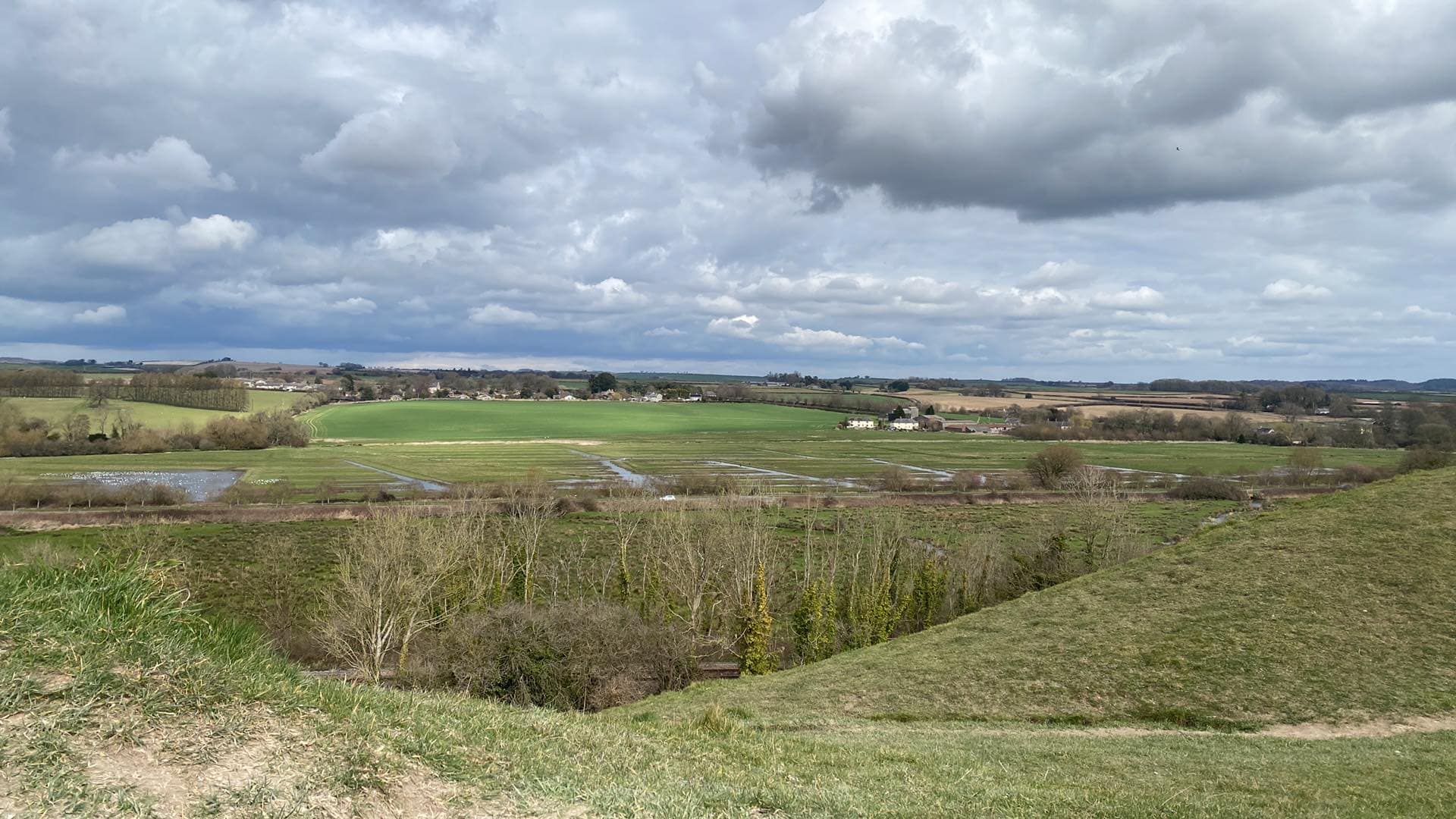Dorchester Water Meadows
The original guide to Sustainable Living
Water meadows have been described as ‘one of the greatest achievements of English agriculture’. They are an important part of our cultural and agricultural heritage and were vital to Dorchester’s economy for over four hundred years.
These areas of land are deliberately flooded for three main purposes: to force early growth of grass in the spring, to improve the quality of the grass sward and to increase the summer hay crop.
In addition to their importance for wildlife and the historic environment, there is good evidence that water meadows provide wider environmental benefits. They can contain flood water, trap silt and help to reduce the nutrient load in water returned to rivers. Recent evidence has found that grazing animals on water meadows can reduce the need for veterinary visits due to improved nutrition, increased disease resilience, and lower parasite burdens from a diverse diet and varied sward management.
There were once water meadows all the way down the Frome valley. This system of water channels, weirs and ‘hatches’ (small gates) to regulate the water levels was developed by Dutch engineers in the 17th century. They discovered that a small amount of water flowing across the soil kept the ground temperature up and meant that the grass could grow all year round, rather than stopping growing in the winter. Water was diverted back into the river again when the meadow was needed for sheep or cattle to graze. In Dorset farmers kept sheep on the water-meadows between late February and late March. Then they flooded the fields again to encourage the hay crop. After the hay was cut cattle were brought in.
To the north of Dorchester, the Frome valley is notable for its water meadows, with their complex system of water courses, hatches and weirs between the rivers Frome and Cerne. These allowed the pastures to be flooded when not being grazed, and this irrigation in winter both enriched the soil and kept its temperature above freezing which meant a much-improved crop of early spring grass.
The view of the water meadows from the top of Poundbury Camp when the Frome is running high is still as Hardy described it almost 150 years ago in “Return of the Native” (Book 3 Chapter II) “watered on a plan so rectangular that on a fine day they look like silver gridirons" – see picture below

The meadows, in common with most throughout the country, are no longer maintained, though they form an important wildlife habitat only a few minutes’ walk from the town centre.
Ian Gosling, Chair of Dorchester Civic Society, writes that “the area of water meadows lying to the north-west (Charminster), north (Stinsford) and north-east of Dorchester (West Stafford), together with its associated meadows and downland to the north, remains unchanged as a complete agricultural landscape. As such it constitutes a rare survivor and a very important historical landscape which it is essential to preserve in order to be able to “read” the setting of Dorchester and to understand the importance which agriculture has played, and continues to play, in the development of the original pre-roman settlement into a modern County Town. For that reason, Dorchester Civic Society has applied to have the whole area registered as a Local Heritage Asset.
Sadly, the views from Dorchester's stretch of the river are under threat of development with 4,000 houses outlined for planning permission in the Dorset Council Local Plan, which is currently under review. THS members and lovers of this part of Wessex are encouraged to write in their objections providing valid reasons to planningpolicyconsult@dorsetcouncil.gov.uk. You do not need to be a local resident to write. If you have a genuine love for the Wessex countryside and may be deterred from visiting if the landscape were to become part of a large urban housing development, please let the planners know your views.

Starts 12:00 until 18:00

Starts 12:00 until 14:00

Starts 15:00 until 16:00

Starts 18:30 until 20:30